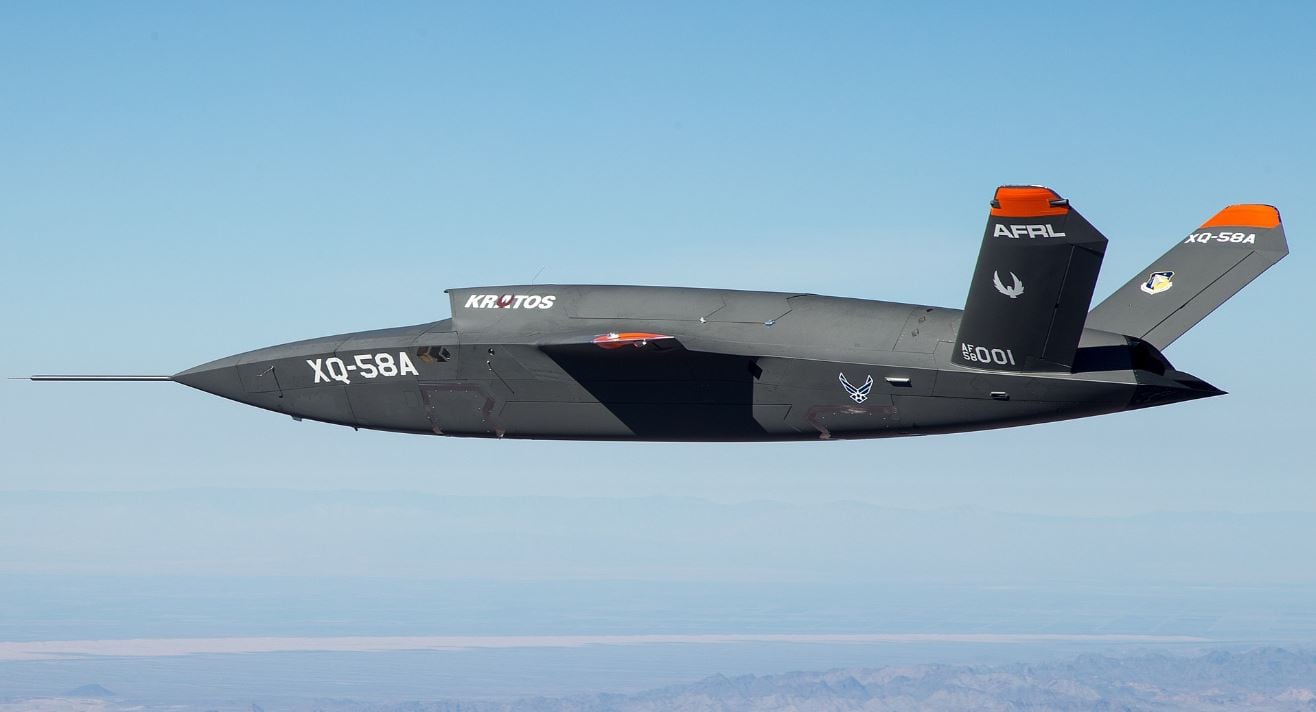WASHINGTON — Further investments in advanced technologies like the autonomous combat drone known as Skyborg topped the Air Force’s unfunded wish list for fiscal year 2021, beating out the need to buy more F-35s.
Every year, the services submit unfunded priorities lists, or UPLs, to Congress that lay out how they would spend a budget with a larger topline. These recommendations are usually used by lawmakers as a baseline for their own changes to the budget, with congressional committees often moving funding to accommodate larger buys of planes, ships and vehicles as spelled out in the lists.
RELATED

This year, the Air Force lists an $115 million investment in advanced technology as its biggest need, following a trend over the past several years in which the service used its UPL to seek out additional funds for classified programs or cutting-edge development programs.
Of that sum, $25 million would go to Skyborg, one of the service’s highest visibility technology programs. The Air Force envisions Skyborg as an AI-equipped “loyal wingman” that could fly alongside fighter pilots autonomously, sending back important data to pilots and improving its skills the more it operates.
However, the program does not currently have enough funding to start testing a prototype aircraft. With an additional $25 million, the Air Force would be able to integrate an unspecified number of vehicles with artificial intelligence, according to the UPL. That funding also would allow the Skyborg to be rapidly transitioned to U.S. Indo-Pacific Command and to a program of record.
Will Roper, the Air Force’s acquisition executive, told reporters on Friday that the service is still bullish on Skyborg. However, it opted to delay funding a prototype in FY21 because of funding throughout the budget for further testing on the XQ-58A Valkyrie drone, which will likely serve as the Skyborg prototype.
“There’s huge enthusiasm for Skyborg,” he said. “I fully expect that we’ll see an attritable drone program called Skyborg in our FY22 budget. It’s high on the list and if it makes the FY22 budget then we know we have the funds … to be able to keep it alive, keep it moving, and work on the artificial intelligence.”
The $115 million investment in advanced technology also would include $35 million for an AI-equipped version of the small diameter bomb. According to the UPL, the goal would be to create a prototype SDB variant “that autonomously optimizes coordinated attacks” on radar-emitting or GPS targets, following rules of engagement that are predetermined by the user.
The biggest chunk of the desired advanced technology investment — about $55 million — would go to the vaguely-named Emerging Technology Concept Operational Prototype. Most details on the program are classified, but the UPL states that the funding would be used to advance the maturity of the technology, do design work necessary for a prototype and secure a space launch.
The most expensive item on the wishlist — clocking in at about $1.3 billion — is an unfunded requirements for additional F-35 joint strike fighters and associated expenses. The list states that around $1.2 billion of that would procure an additional 12 F-35A conventional takeoff and landing models at a price of about $80 million a piece, while the rest would go toward advance procurement of 12 aircraft in FY22 as well as the ability to buy certain parts in economic order quantities.
The Air Force listed funding for “advanced weapon systems” as its number two priority. Specifically, the service would like to spend an additional $228 million on GPS M-Code receivers, which enables secure positioning, navigation and timing for military users of GPS. That funding would also go toward classified offensive cyber operations.
Funding for infrastructure also made up a major portion of the list. The service has an $190 million unfunded requirement for certain tech needed to modernize its test and training ranges, such as systems that emulate near-peer threats, which are necessary to train pilots of fifth-generation aircraft like the F-35.
The Air Force included $736 million needed for facility sustainment and modernization, as well as $589 million for military construction projects such as a stealth coating repair facility for the B-21 Raider at Ellsworth Air Force Base, S.D. and a software integration center for the Ground Based Strategic Deterrent program at Hill Air Force Base, Utah.
Valerie Insinna is Defense News' air warfare reporter. She previously worked the Navy/congressional beats for Defense Daily, which followed almost three years as a staff writer for National Defense Magazine. Prior to that, she worked as an editorial assistant for the Tokyo Shimbun’s Washington bureau.







